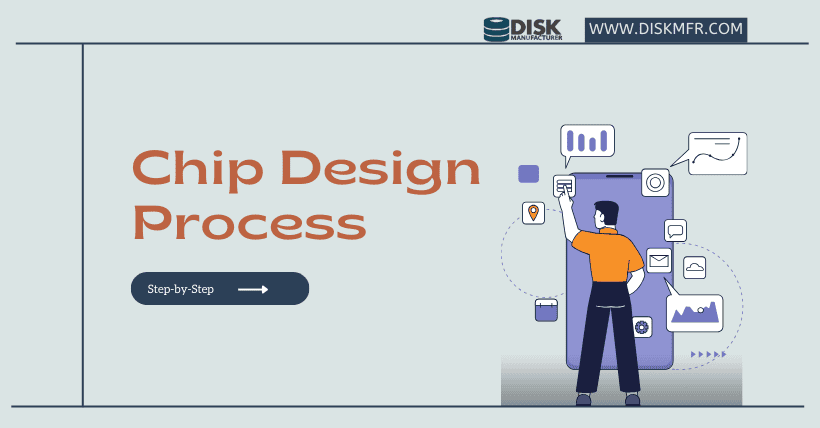Chip design is a complex and multi-step process that involves several stages from concept to final physical implementation. Below is a detailed introduction to the main processes and their contents in chip design:
1. Functional Design – Chip Design Process
Requirement Analysis
The first step in chip design is to clarify the functional requirements of the chip. This requires in-depth communication with potential chip users (such as electronics manufacturers) or application fields (such as communications, artificial intelligence, automotive electronics, etc.). For example, a chip designed for smartphones must consider functions such as supporting high-definition video playback, multitasking, and fast data communication (e.g., 5G). On the other hand, automotive electronics chips must focus on stability in harsh environments (e.g., high temperatures, vibrations) and support functions for various automotive sensors and control systems (e.g., engine control, advanced driver-assistance systems).
Functional Specification Definition
Based on the results of the requirement analysis, the functional specifications of the chip are defined in detail. This includes the functionality and characteristics of the chip’s input and output interfaces, such as interface types (e.g., USB, SPI), data transfer rates, and signal level standards. It is also necessary to determine the specific functions of each internal module (e.g., CPU, GPU, memory units) and how they work together. For instance, for a chip that combines graphics processing and AI acceleration functions, specifications must define how the GPU collaborates with the AI accelerator to efficiently perform tasks like image recognition or intelligent effects in game rendering.
2. Architecture Design – Chip Design Process
Selecting the Appropriate Architecture Type
Based on the functional specifications, an appropriate chip architecture is selected. As mentioned earlier, common chip architectures include the Von Neumann architecture and the Harvard architecture. If the chip is mainly used for general computing and data processing, the Von Neumann architecture may be a suitable choice. For high-speed data processing and real-time applications, such as digital signal processing or certain embedded systems, the Harvard architecture may offer better advantages. For complex chip designs, multi-core architectures or heterogeneous integration architectures may also be adopted to meet diverse functional requirements.
Architecture Optimization and Innovation
Optimization and innovation are performed on the selected architecture. This may involve adjusting the connection methods between functional modules, optimizing data paths to reduce latency, or adopting new computing paradigms. For example, in some AI chip designs, systolic array architectures are used to accelerate neural network computations. By strategically arranging the layout of computing units and the flow of data, the efficiency of key operations like matrix multiplication can be significantly improved.
3. Circuit Design – Chip Design Process
Logic Circuit Design
Logic circuit design involves creating circuits based on the chip architecture and functional requirements. This includes designing basic logic gates (e.g., AND, OR, NOT gates) as well as more complex combinational and sequential logic circuits composed of these gates. For example, a counter circuit designed to track the number of operations performed within the chip would require sequential logic circuits controlled by clock signals to manage counting order and intervals.
Analog Circuit Design
In addition to logic circuits, chips also contain analog circuit components. Analog circuits handle continuous signals and include components like power management circuits, amplifiers, analog-to-digital converters (ADC), and digital-to-analog converters (DAC). For instance, a power management circuit must precisely regulate the voltage and current supplied to the chip to ensure stable operation under different working states (e.g., standby, full load) while optimizing power consumption.
Circuit Layout Design
Circuit layout design involves drawing the designed logic and analog circuits onto a silicon wafer according to specific rules and layout methods. This process considers factors such as the size, shape, spacing of components, and the length and width of interconnections. Proper layout design can reduce signal interference, minimize parasitic capacitance and inductance, and enhance chip performance and reliability. For example, in the layout of high-speed digital circuits, clock signal paths should be kept as short as possible and shielded to prevent clock jitter and interference with other signals.
4. Physical Design – Chip Design Process
Chip Manufacturing Process Selection
The manufacturing process is chosen based on the performance requirements and cost constraints of the chip. Key considerations include the process node (e.g., 7nm, 5nm), where smaller nodes enable higher chip integration and better performance but also increase costs. Other considerations include the materials supported by the process (e.g., silicon, compound semiconductors) and process steps (e.g., lithography, etching, doping). For high-performance processor chips, advanced extreme ultraviolet lithography (EUV) processes might be used to achieve smaller transistor sizes and higher integration.
Packaging Design
Chip packaging involves enclosing the fabricated chip in a protective shell while providing interfaces for connection to external devices. Packaging design must consider factors such as heat dissipation, mechanical protection, and electrical performance. For instance, high-power chips may require packaging materials and structures with excellent thermal performance, such as heat sink packages, to prevent damage due to overheating. Additionally, the pin layout and packaging form (e.g., BGA, QFN) must facilitate chip installation on circuit boards and connection with other electronic components.
Related:

Disclaimer:
- This channel does not make any representations or warranties regarding the availability, accuracy, timeliness, effectiveness, or completeness of any information posted. It hereby disclaims any liability or consequences arising from the use of the information.
- This channel is non-commercial and non-profit. The re-posted content does not signify endorsement of its views or responsibility for its authenticity. It does not intend to constitute any other guidance. This channel is not liable for any inaccuracies or errors in the re-posted or published information, directly or indirectly.
- Some data, materials, text, images, etc., used in this channel are sourced from the internet, and all reposts are duly credited to their sources. If you discover any work that infringes on your intellectual property rights or personal legal interests, please contact us, and we will promptly modify or remove it.








